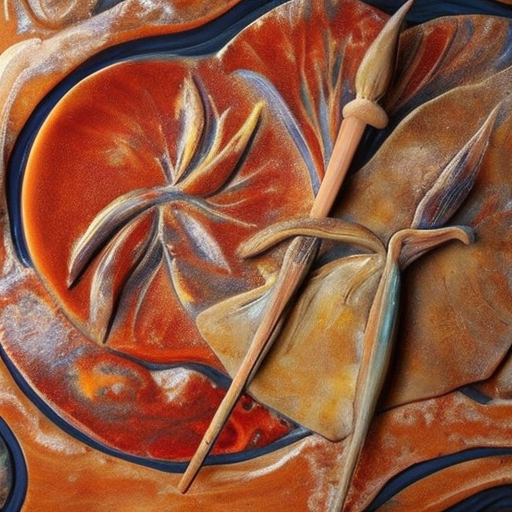Ceramics: An Overview
Ceramics is a broad term that refers to objects made from clay and other inorganic materials, which are shaped and then fired at high temperatures to achieve a hardened, durable form. This ancient art form has been practiced by cultures around the world for thousands of years, and it continues to be a popular medium for artistic expression and functional objects.
History of Ceramics
The history of ceramics can be traced back to prehistoric times when early humans discovered that clay could be molded into various shapes and hardened by exposure to fire. The earliest known ceramic objects date back to around 24,000 BC and were found in the Czech Republic. These objects were simple figurines and vessels made from clay.
Over time, ceramics evolved and became more sophisticated. In ancient civilizations such as Egypt, Mesopotamia, and China, ceramics were highly valued and used for both practical and decorative purposes. The invention of the potter’s wheel in Mesopotamia around 3,500 BC revolutionized the production of ceramics, allowing for faster and more precise shaping of clay.
Types of Ceramics
There are several different types of ceramics, each with its own unique characteristics and uses. Some of the most common types include:
- Earthenware: This is the oldest and most basic type of ceramic. It is fired at relatively low temperatures and has a porous, opaque quality. Earthenware is often used for everyday objects such as dishes and pottery.
- Stoneware: Stoneware is fired at higher temperatures than earthenware, resulting in a denser, more durable material. It is often glazed to create a smooth, waterproof surface. Stoneware is commonly used for tableware and decorative objects.
- Porcelain: Porcelain is a type of ceramic that is fired at very high temperatures, resulting in a translucent, glass-like material. It is known for its strength and beauty and is often used for fine china and decorative objects.
- Raku: Raku is a Japanese ceramic technique that involves removing pieces from the kiln while they are still red-hot and placing them in combustible materials to create unique surface effects. Raku ceramics are prized for their unpredictable and dramatic finishes.
Techniques and Processes
Creating ceramics involves a series of techniques and processes that require skill and precision. Some of the most common techniques include:
- Handbuilding: Handbuilding is the process of shaping clay by hand, using techniques such as pinching, coiling, and slab construction. This method allows for a more organic and expressive approach to ceramics.
- Throwing: Throwing is the process of shaping clay on a potter’s wheel. It requires a combination of skill and coordination to create symmetrical and well-proportioned forms.
- Glazing: Glazing is the process of applying a thin layer of glass-like material to the surface of a ceramic object. This not only enhances its appearance but also provides a protective coating.
- Firing: Firing is the final step in the ceramic process. It involves placing the shaped and glazed objects in a kiln and subjecting them to high temperatures to harden the clay and fuse the glaze.
Contemporary Ceramics
In recent years, ceramics has experienced a resurgence in popularity as contemporary artists and designers explore new possibilities within the medium. Many artists are pushing the boundaries of traditional ceramics by experimenting with unconventional forms, materials, and techniques.
Contemporary ceramic art often blurs the line between art and craft, with artists using ceramics to create sculptural installations, mixed-media works, and conceptual pieces. The versatility of ceramics allows for a wide range of artistic expression, from delicate porcelain sculptures to large-scale ceramic installations.
Ceramics also continues to be used for functional objects, with contemporary designers creating innovative and stylish tableware, home decor, and architectural ceramics. The combination of traditional craftsmanship and modern design sensibilities has resulted in a vibrant and diverse ceramic art scene.
In conclusion, ceramics is a versatile and enduring art form that has been practiced for thousands of years. From ancient civilizations to contemporary artists, ceramics has evolved and adapted to reflect the changing times. Whether it’s a delicate porcelain sculpture or a functional stoneware bowl, ceramics continues to captivate and inspire with its beauty and craftsmanship.












